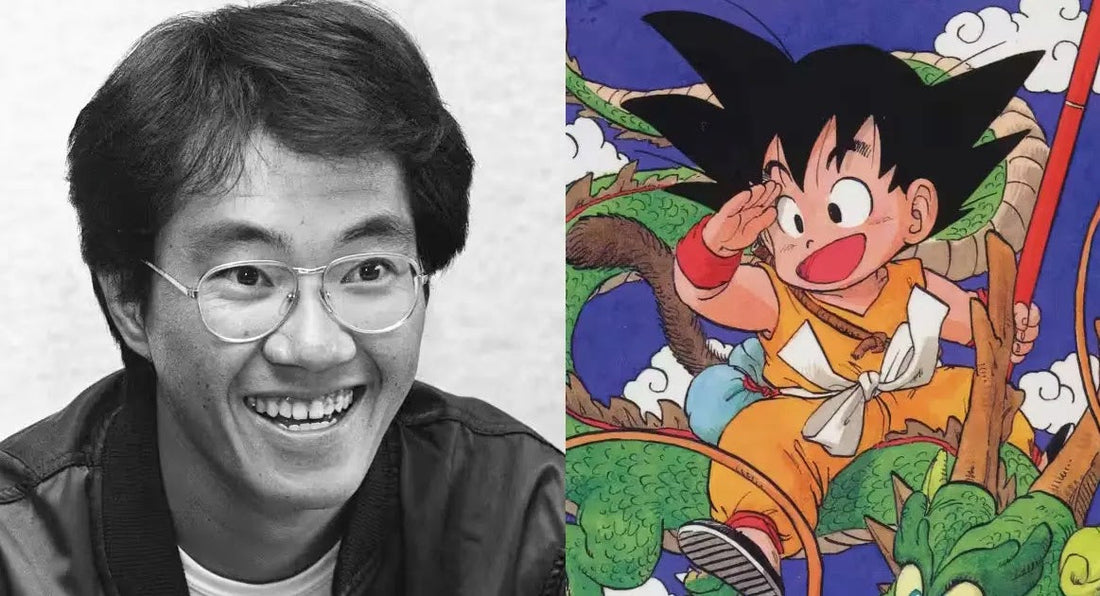
The History of Dragon Ball Z: From Manga to Global Phenomenon
When you think of iconic anime, Dragon Ball Z likely stands tall at the top of the list. With explosive battles, unforgettable characters, and a power-scaling meme that lives on to this day (“It’s over 9000!”), Dragon Ball Z is more than just a TV show—it’s a cultural force. But how did it all begin? Let’s explore the incredible journey of Dragon Ball Z, from its humble manga roots to becoming a worldwide phenomenon.
📖 Origins: The Manga That Started It All
It all began in 1984, when manga artist Akira Toriyama launched a new series in Weekly Shonen Jump titled Dragon Ball. Inspired by the classic Chinese tale Journey to the West, it followed a young monkey-tailed boy named Goku on a quest to collect seven magical Dragon Balls.
As the series progressed, the tone shifted from comedic adventure to high-stakes martial arts, introducing tournaments, powerful enemies, and Saiyan lore. This evolution led to the birth of a more action-oriented continuation—what we now know as Dragon Ball Z.
📺 The Anime Takes Off (1989)
In 1989, Dragon Ball Z debuted on Japanese television. Produced by Toei Animation, the anime picked up right after the original series, covering the Saiyan Saga, Frieza Saga, Cell Saga, and Majin Buu Saga—all of which have become staples of anime storytelling.
While the manga continued under the same name (Dragon Ball), the anime made a clean distinction by branding the more intense, action-packed arcs as Dragon Ball Z. This move helped solidify Goku’s transition from boy to god-like warrior.
🌍 Global Expansion and Western Debut
Although Dragon Ball Z aired in Japan from 1989 to 1996, it didn’t hit Western audiences until the mid-to-late 1990s. Companies like FUNimation, Saban Entertainment, and Cartoon Network’s Toonami block played pivotal roles in bringing DBZ to the English-speaking world.
The dub featured memorable voice acting (and some infamous censorship), but it captivated millions of kids and teens across the globe. Suddenly, after-school conversations shifted from playground games to Super Saiyan transformations and Kamehameha waves.
🧬 Evolution and Legacy
After DBZ concluded in 1996 (with the manga ending in 1995), the franchise spawned several continuations:
-
Dragon Ball GT (1996) – A non-canon sequel series with mixed reception.
-
Dragon Ball Z Kai (2009) – A remastered version of DBZ with tighter pacing and better visuals.
-
Dragon Ball Super (2015) – The official sequel to DBZ, featuring new gods, multiverses, and fan-favorite characters like Beerus and Jiren.
Alongside the shows, dozens of movies, video games, and merchandise kept the brand alive and thriving.
💥 Impact on Pop Culture
From Goku’s spiky hair to Vegeta’s infamous power readings, Dragon Ball Z has left a permanent mark on pop culture:
-
Referenced in hip hop, Hollywood films, and professional sports.
-
Inspired generations of artists, animators, and game designers.
-
Pioneered the "power-up" trope now standard in countless shonen anime.
Characters like Goku and Piccolo have even been recognized by real-world governments (Goku was once an honorary ambassador for the 2020 Olympics!).
🔮 The Future of Dragon Ball
The Dragon Ball franchise shows no signs of stopping. With upcoming movies, new manga arcs (Dragon Ball Super continues), and ongoing fan projects, Goku's legacy is only getting stronger.
Fans now span multiple generations, united by the thrill of energy blasts and the values of perseverance, growth, and honor.
Final Thoughts
From the sketchpad of Akira Toriyama to stadiums full of fans cheering at anime conventions, Dragon Ball Z has truly become a global phenomenon. Whether you're rewatching the Cell Saga or introducing your kids to Super Saiyan Gohan, you're part of a legacy that spans decades—and galaxies.
Which moment in DBZ changed your life? Let’s talk in the comments below!








